The Abstract World of David Day’s Studio ICM Photography
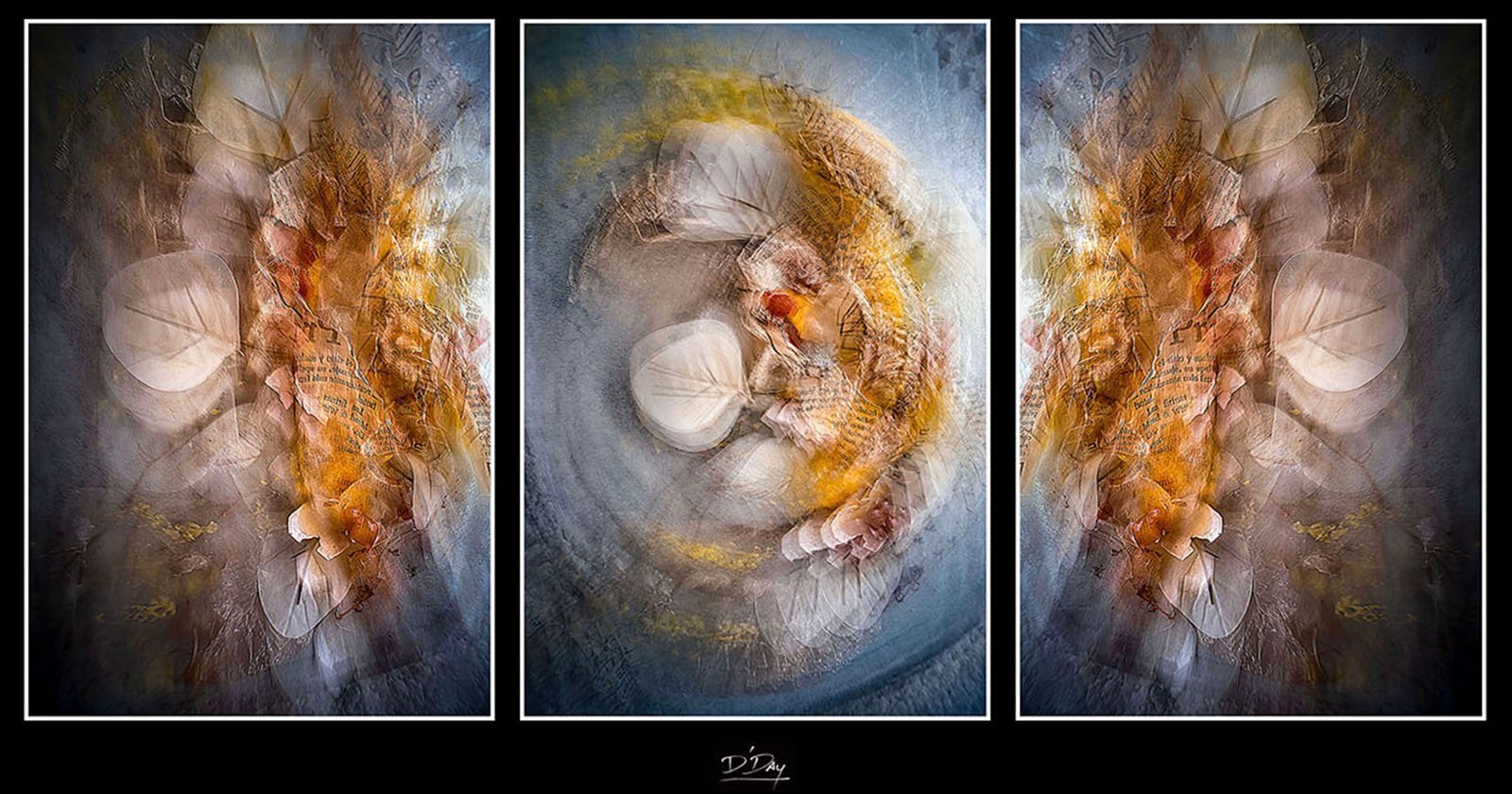
David Day’s photography bends the rules of reality, transforming everyday objects into dreamlike abstractions through intentional camera movement (ICM) in a studio setting. At the crux of art and experimentation, Day spoke with PetaPixel, inviting viewers to discover his process and how he turns layers of light, motion, and imagination into photographic art.
It begins, as many great stories do, with a spark of unexpected curiosity. For photographer David Day, who specializes in intentional camera movement, that spark was lit not in a studio, but in a bathroom commandeered by his son to build a resin-coated water bath for processing prints. That unassuming project rekindled Day’s lifelong love of photography, sending him on a creative voyage through light, form, and motion that today finds its expression in a wholly unique genre: studio-based abstract ICM.
Now a celebrated experimental artist with awards, books, and international lectures to his name, David Day is not just any photographer, he is a visual storyteller, a dream interpreter, and perhaps most strikingly, a scientist of the surreal. Through studio ICM, he manipulates light, everyday objects, and precise camera movement to forge compelling abstract images that toe the line between perception and illusion. His work invites viewers not only to look, but to see, to find meaning, form, and feeling in the ambiguities.
“I’ve always liked to make images that look like something else,” Day explains. “I think that goes back to my dreams.”
Indeed, dreams play an outsized role in Day’s photographic ethos. A lifelong sleepwalker and vivid dreamer, Day often draws parallels between his subconscious wanderings and the ethereal, pareidolic images he creates. From his first accidental ICM abstract, which he spent weeks trying to replicate, to the thousands of intentional experiments that followed, Day has sought to give form to memory and emotion through his lens.

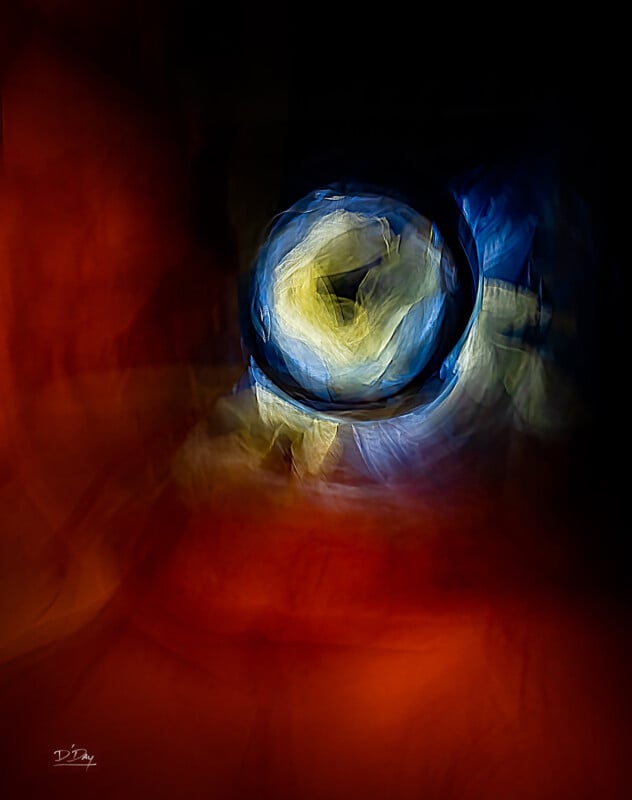
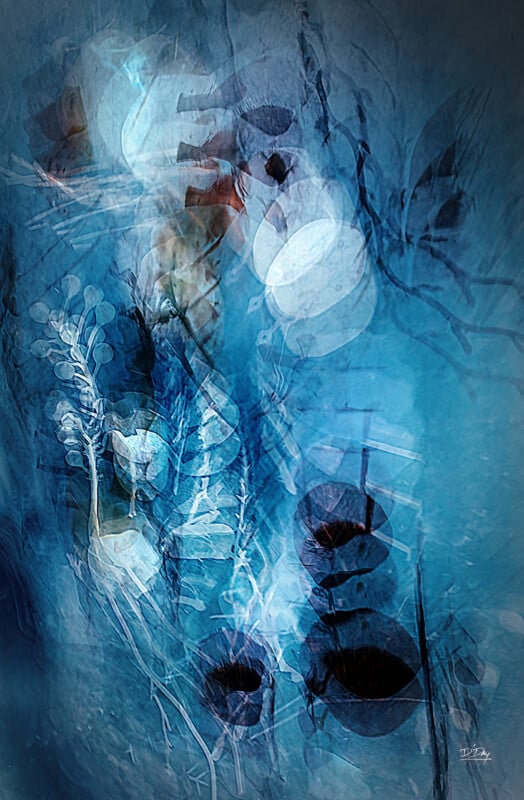
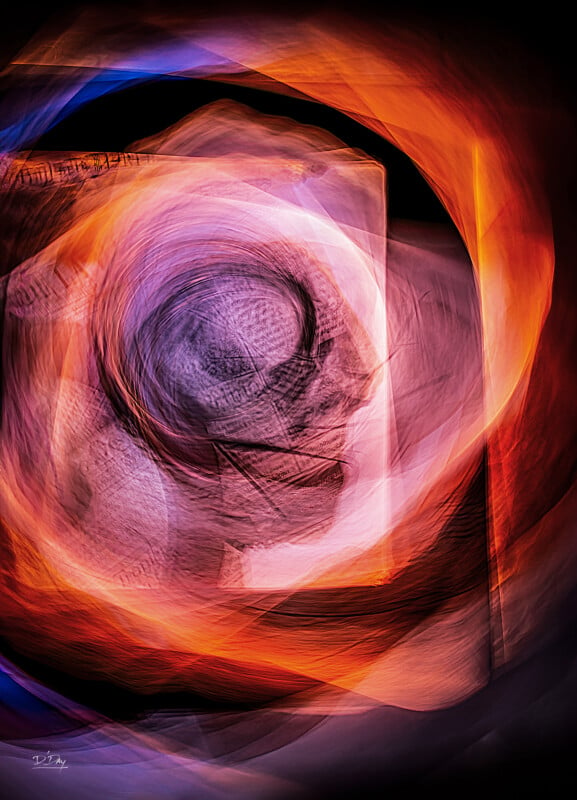
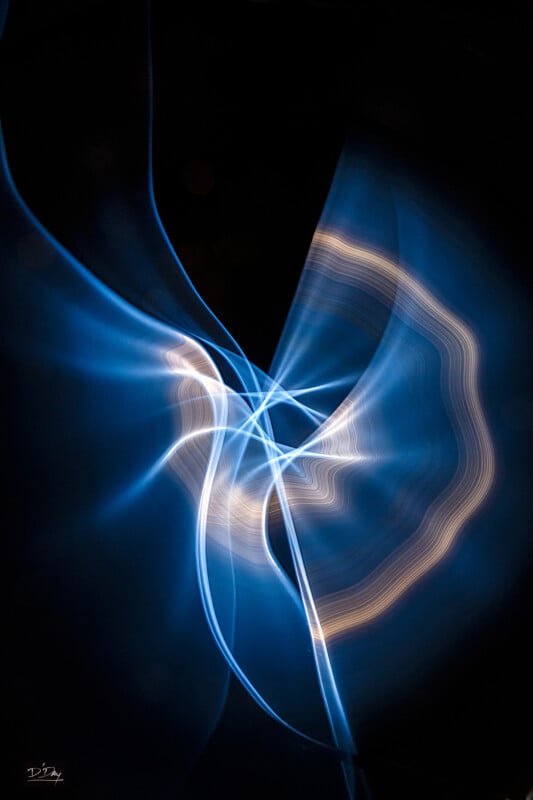
Day’s Studio ICM: Art By The Way of Alchemy
While ICM, as a technique, has been widely explored in outdoor contexts, such as landscapes, trees, and urban scenes, David Day has turned inward, both literally and figuratively, with his creation of studio ICM. By photographing mundane materials, banana peels, masking tape, newsprint, plastic bags, under highly controlled lighting and movement conditions, he extracts the extraordinary from the ordinary.
“I don’t see the camera and the scene as separate. The scene is a collection of paintbrushes. I move the camera to paint the scene onto the sensor,” Day says.
The process is intensely experimental, where thousands of test shots often precede a final image. For Day, light is not merely an illuminator but a collaborator. His “studio” is a custom-built mobile lightbox equipped with controllable LED systems, ice sheets for added texture, and even a ring light he ripped from an old lightbox and flipped upside down. It’s art by way of alchemy.
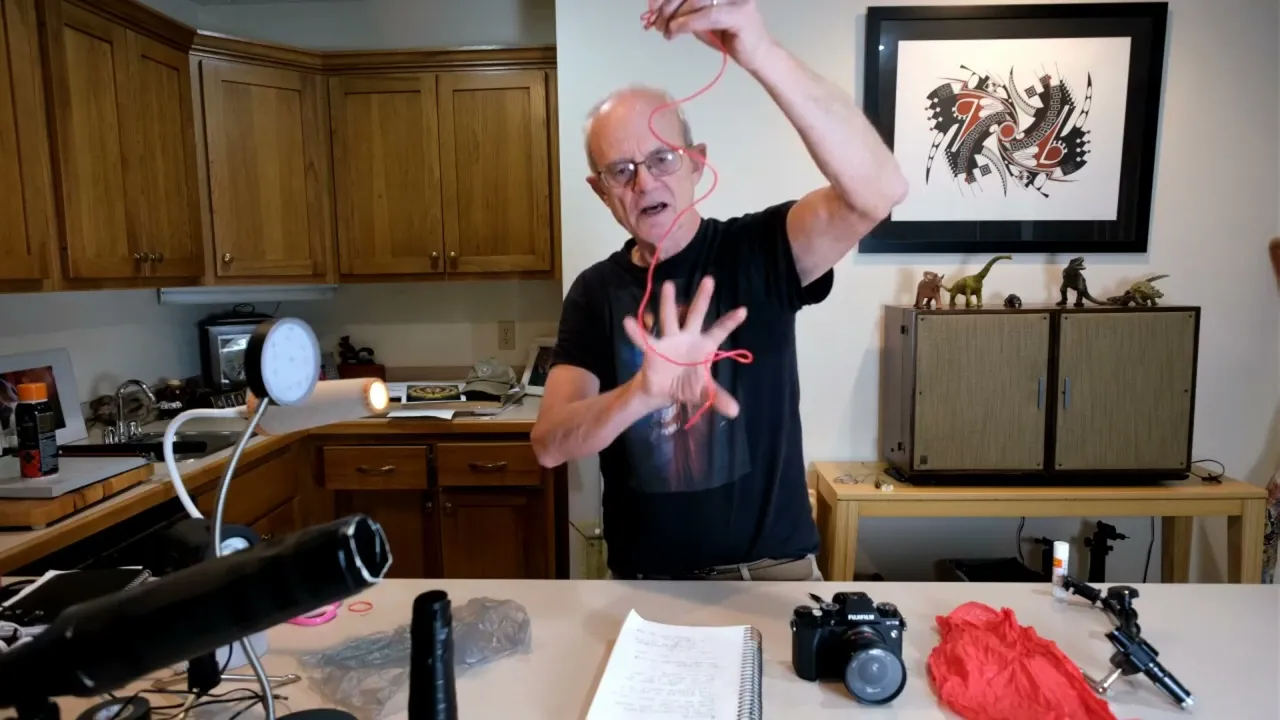
Form, Feeling, and Serendipity
The magic of Day’s work lies in its ability to surprise. In one Art Fair, a young boy studied an image and proclaimed, “You are obviously photographing an intergalactic vortex.” That spontaneous interpretation stayed with Day, and it’s easy to see why. His photographs contain layers upon layers, both visually and metaphorically.
“The most rewarding aspect is when someone sees something I didn’t. It becomes a dialogue,” Day says.
Like identifying the shapes of clouds on a warm day, every viewer sees their own interpretations of the shapes and textures in Day’s abstracts, which are sometimes shaped by personal bias, adding insight and thought-provoking context to the otherwise chaotic and motion-filled scenes created from everyday objects.
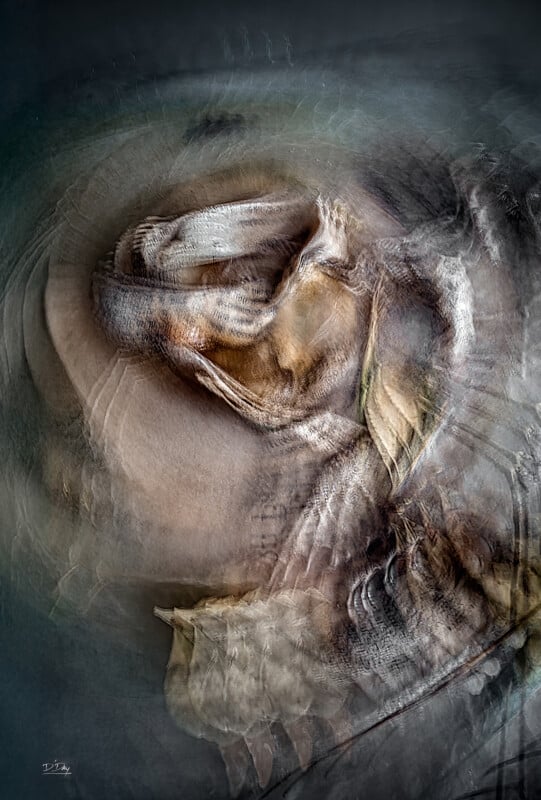
Works like Equus are especially ripe for stirring conversation, Day sees a horse, but many see a cat. In Tendonitis, a striking image made from a plastic bag, tissue, and a glass rim, viewers have had emotional, even visceral reactions, sometimes so intense that they’ve returned the print upon learning its name.
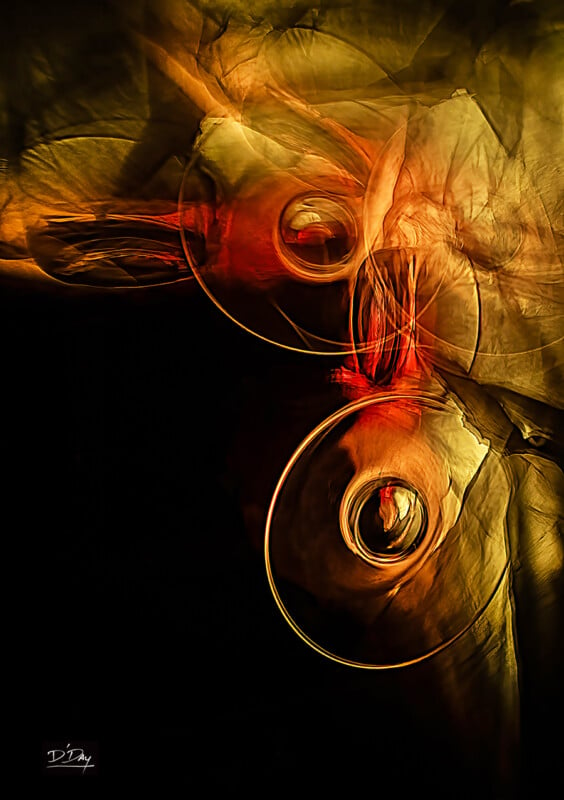
![]()
Then there’s Perils Along the Road Less Traveled (shown above), a triptych that used a crystal ball, newsprint, and plastic bags to tell a story about life’s unpredictable terrain. It was created for a theme show in South Carolina and went on to win multiple awards. Like much of Day’s work, it marries a conceptual narrative with an experimental foundation.
The Science Behind the Art is a Dance in Darkness
Day’s meticulous technical process contrasts with the perceived spontaneity of his art. With his trusted duo of camera bodies, the Fujifilm X-T3 and X-T5, paired with his choice of niche wide-angle lenses, such as the Laowa 10mm “cookie” lens and Fujinon 8mm and 14mm, always set at f/16, he notes that a calculated formula is repeated to maximize movement within close quarters. The movement itself is not random; it is practiced, rhythmic, and often done to music to create consistency across frames.
“It’s a dance between camera, movement, and the scene. When everything works, that’s when the repetition starts,” Day explains.
He works in near-complete darkness to eliminate unwanted reflections. Shots are long, typically two seconds or more, and at times, Day takes over 1,000 shots in a single day. His post-processing workflow is minimal compared to digital norms: Lightroom for culling, Photoshop Camera Raw for tonal adjustment, and Topaz for light denoising and sharpening.
Critically, there is no AI involved. In fact, Day displays signs at his shows to clarify this.
“People assume the work is AI-generated. Some juries have even rejected my images on that belief,” he adds.
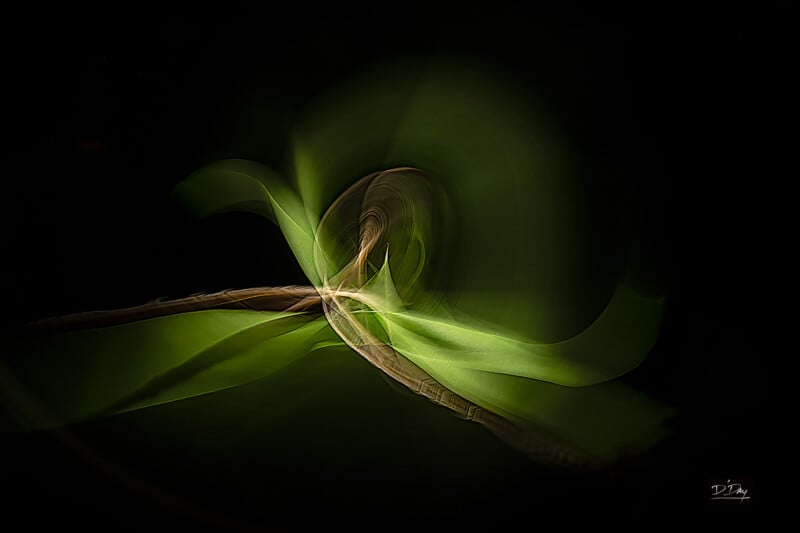

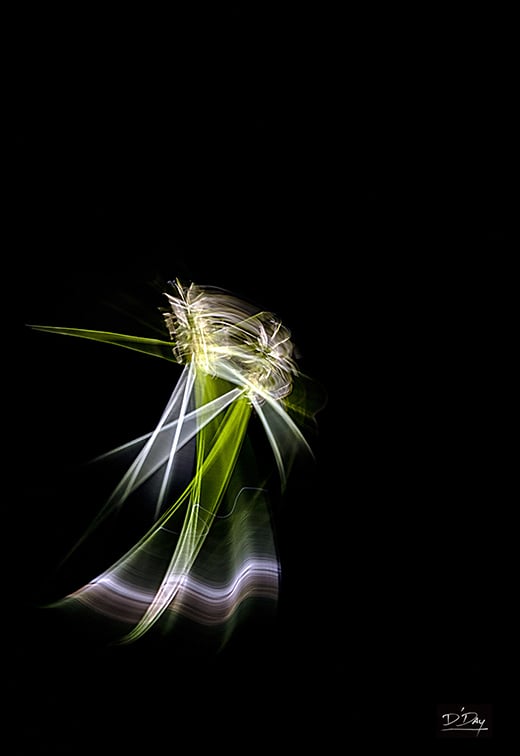
Looking Forward: Legacy and Ice
For Day, the future is an evolving palette. One of his current obsessions is ice, how it cracks, refreezes, interacts with submerged objects, and refracts light. It’s an ongoing investigation, one that promises new textures and effects yet to be fully understood.
But beneath the technical and artistic layers lies a deeper purpose. After a former life in computer science and medical software, where his programs were translated into 32 languages, Day is determined that this work, this creative labor of movement and light, is what he will be remembered for.
“I want to contribute something that is enduring, visually appealing, and different. When I had that happy accident with the wire, it felt like I had come home,” Day says.
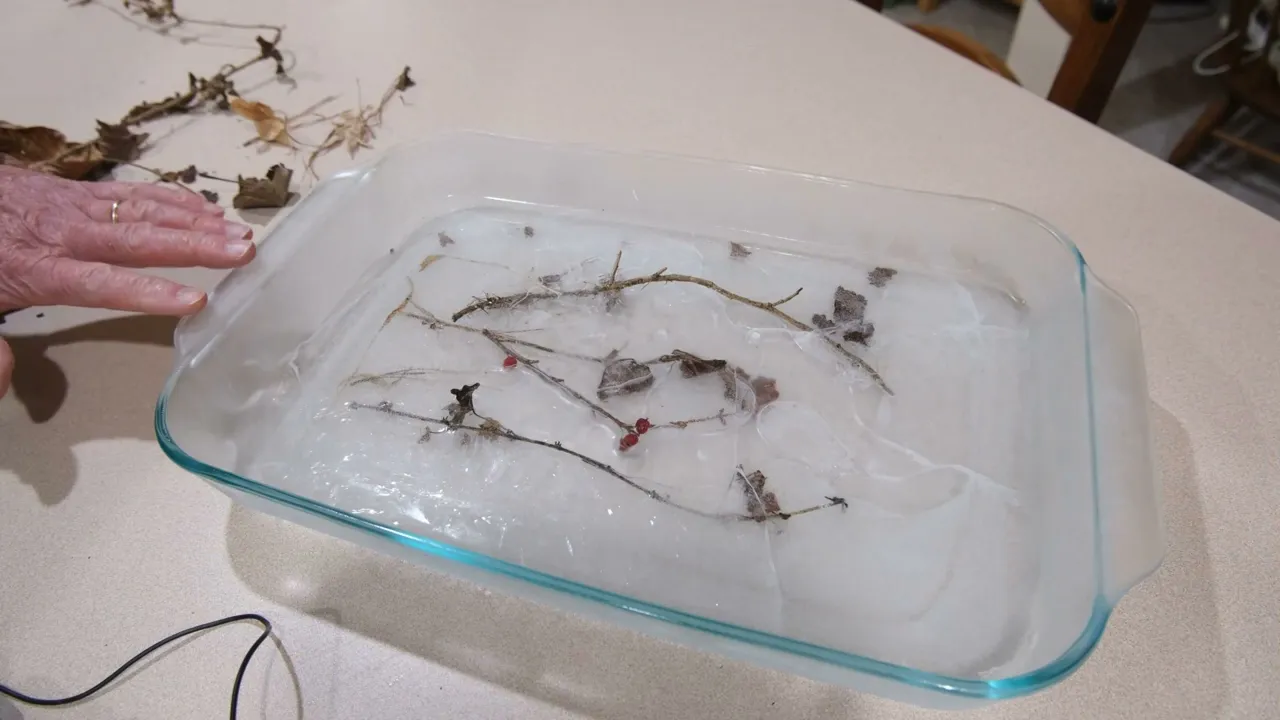
Photography That Doesn’t Just Push Boundaries, It Dances With Them
David Day’s photography invites contemplation. In an era saturated with algorithmic sameness, his handcrafted abstracts speak to a kind of visual poetry that is simultaneously meditative and imaginative. To engage with his work is to embark on a journey, a dance with him, into the subconscious, into abstraction, and perhaps even into oneself.
He captures more than images. He captures the essence of what it means to wonder, play, and be in the moment, at a time when many need it most.
Image credits: David Day


